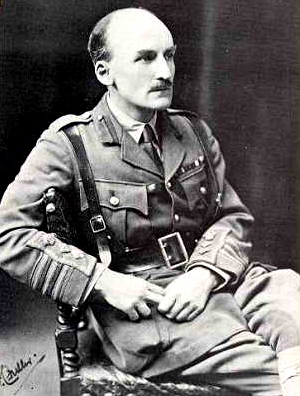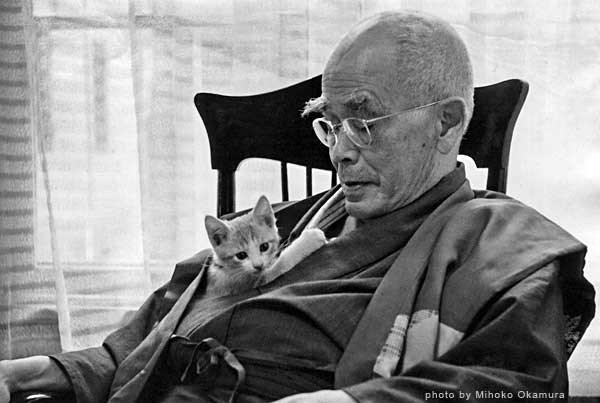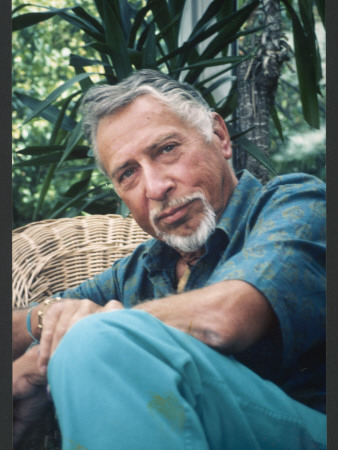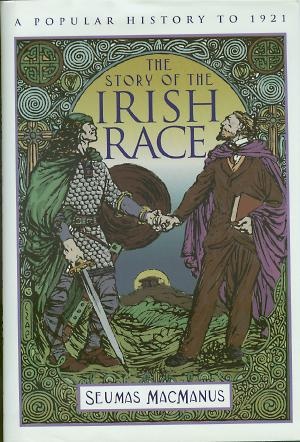
INFLUENCES, PART 4
J.F.C. FULLER

What?!!!
JFC Fuller (1878-1966) was a British military man and later military
historian, most noted for his contributions to the development of tank warfare
towards the end of World War One (which finally ended the murderous stalemate in
the trenches), and the authorship of several notable books on warfare and
history, including Armament and History;
The Generalship of Alexander the Great;
Julius
Caesar:
Man, Soldier, and Tyrant; The
Generalship of Ulysses S. Grant;
Grant and Lee: A Study in
Personality and Generalship; and A
Military History of the Western World (in three volumes).
Certainly a product of his times in terms of worldview and
Western-centric perspectives, and often accused of being unduly opinionated in
his interpretations of historical events, not to mention his flirtation with
British Fascism in the 1930s, Fuller was nonetheless a military genius with a
powerful (if subjective) intellect, a sweeping view of history, and a mastery of
the intricate connections between men, machines, technical processes, political
and economic methods, and culture.
For whatever reason, as a teenager through my early twenties, I was fascinated
by military history, and Fuller was, for me, far and away the most engaging
authority on the topic. He brought to
life the rise and fall of civilizations, the clashes of ideas and life-ways
throughout history, and the role of great personalities and minds in the
struggles between nations, kingdoms, and empires for the future of regions and
later, the entire earth. The
ancient Greek philosopher Heraclitus once stated: "We must know that war is
common to all, and that strife [in its form of opposites working against each
other but in balance] is the foundation of the order of the Universe, and that
all things come into being through strife necessarily."
If one grants these words of his any credibility at all, then the human
expression of strife through war, and the organization of societies and
technologies around the object of surviving this reality, become comprehensible
and significant matters of study.
In The March of the Eccentrics,
powerful empires (the U.S., which has become a dictatorship, and the Soviet
Union, which has remained one) struggle for mastery of the world as well as for
continued control of their own populations; and the free spirits and freedom
lovers of the earth, while clinging to their love of pacifist heroes such as
Gandhi and Thoreau, and spiritual teachers and philosophers who have been
attempting to find a way out of the recurring human nightmare, are driven to
seek ways to preserve their lives and liberty in the world as it is (until it
can be brought to a higher level).
Thus, the Eccentrics form their own military strategy for survival, based upon
amazing new high-tech weapons and the techniques necessary to utilize them.
Without a doubt, the influence of JFC Fuller shows through in the way
this futuristic combat force is put together and wielded on behalf of the
nonconformists of the world, otherwise slated for extinction...
D.T.
SUZUKI

If a man
of war has been a major influence on the development of my novel, so has a man
of spirit, the renowned Japanese Buddhist scholar and Zen practitioner Suzuki
Daisetsu Teitaro, or Daisetz (D.T.) Suzuki, (1870 - 1966).
Apparently an imperfect man as well (never read the full biography of
anyone you admire!), Suzuki wrote innumerable articles and books about Zen
Buddhism for the benefit of Westerners.
I remember, in particular,
Introduction to Zen Buddhism (with a foreword by Carl Jung),
Zen and Japanese Culture (my
favorite), and The Essentials of Zen
Buddhism, edited by Bernard Phillips (I was accused by the librarian of
ruining it by either immersing it in water or leaving it out in the rain, but
the truth was I borrowed it in that condition - lucky by the time the accusation
was made, I had read enough of the contents to be balanced in my response).
Japanese culture had always interested me, from early childhood on (since
my 3rd-grade crush on Yukiko X), and over the years I had increased this love
with works such as 100 Poems from the
Japanese (edited and translated by Kenneth Rexroth),
An Introduction to Haiku (with
translations and commentary by Harold Henderson),
The Tale of Genji (translated by
Arthur Waley), The Pillow Book of Sei
Shonagon (translated and edited by Ivan Morris),
Tales of Ise (translated, with an
introduction and notes by Helen Craig McCullough), and
Secrets of the Samurai:
A Survey of the Martial Arts of Feudal Japan (by Oscar Ratti and
Adele Westbrook); not to leave out Kurosawa's brilliant film,
The Seven Samurai.
Now there was D.T. Suzuki.
What Suzuki did for me was to bring the whole, clear vision of the Zen Universe
into my consciousness like a flash of light, somehow finding just the right
words, the right metaphors, and the right stories to turn on the nonverbal
hardware of perception and comprehension (which are at the root of the Zen
experience) in my own mind, and suddenly opening up to me a whole new
sensibility and way of relating to existence and reality.
Not to be pretentious -- I am in no way, at the time I write these words,
a liberated being -- but I was greatly enriched by the contact and am still
hopeful of better integrating the insights that came as a result of this contact
into the deeper levels of my soul, from which perceptions, actions, and the
experienced reality of life come.
In the meantime, Suzuki's influence has played a major role in the
development of various scenes and stories in
The March of the Eccentrics. You will
find his influence in some of the thoughts and actions of Yuki Onomatsu, the
crazy ganguro genius, and in the spiritual struggle of Ellen S. Abu to rise
above her imagined limitations and become a fuller, more complete human being.
BERNARD HEUVELMANS

Bernard Heuvelmans (1916-2001), the French-born, Belgian-raised zoologist turned 'father of cryptozoology' is among the greatest influences in my life. This may seem quite shocking at first when you consider the fact that cryptozoology is the serious scientific study of 'unknown' creatures, these being animals whose reputed existence by some has never been officially confirmed by the scientific community as a whole, or else animals believed by authorities to now be extinct, but which some individuals claim may yet live on. (But once you get to know me better, and come to realize how strange I truly am, the surprise goes away. Of course I would be a devotee of cryptozoology!) Among the creatures ripe for study in this controversial field are the Yeti (or Abominable Snowman) of the Himalayas, the Orang Pendek (a smallish ape man) of Sumatra, the Minhocao (a giant armadillo-like creature) of Brazil, the Giant Ground Sloth of Patagonia, and various extant forms of dinosaurs which might (but not necessarily) include the 'Loch Ness Monster', the Mokele-mbembe of the Congo, and the Kongamato of Zambia and Zimbabwe. At a time when this field was more the realm of adventurers and explorers, keen to collect stories and always partial to excitement, than of actual scientists intimately familiar with zoological history and the biological frameworks which explain the behavior and attributes of species, Bernard Heuvelmans came along with an incredible scientific rigor and attention to detail capable of lifting these colorful tales out of the category of folklore and placing them upon the table of serious intellectual consideration. The result was an amazing new fusion of meticulousness and passion, reality and fairy tale, painstaking scrutiny and enthusiastic grail-quest which proved irresistible to many (including myself). It seemed in some ways as though the gap between our hearts and minds, between our need to feel we live in a world of wonder and our need to cut our ties to myths, could be bridged by this marvelous new field. For years, I was the sole user of our library's copy of Heuvelmans' On the Track of Unknown Animals. I would take out the book, renew it till I could renew it no more, then, impelled by guilt, leave it on the shelves for a week or two before (having given others the chance to enjoy it also) I would take it out again. Just to have it around me was magical; it transformed the nature of my room, made my walls seem farther apart, my ceiling higher, the bridge I could see outside of my window shine more brightly. Imagine my delight when my library also acquired Heuvelmans' In the Wake of the Sea-Serpents! Now, not only the land, but also the seas could serve as a medium for resuscitating my fallen awe. In The March of the Eccentrics, cryptozoology and cryptozoologists (such as Reginald Smythe) play a major role, bringing this quasi-spiritual ardor which embodies our human drive to always expand ourselves, to the pages of the novel; men seeking dinosaurs meet men liberating countries, men seeking Yetis meet others seeking spiritual understanding and world peace. In the end, are their endeavors truly so far apart? (For more on my views of cryptozoology, see http://www.rainsnow.org/wod_cryptozoology.htm .)
SEUMAS MACMANUS

Seumas
MacManus (1869-1960), was an Irish writer and storyteller who, arising from poor
roots, went on to perform great literary deeds for his people and all interested
others, preserving many of the tales, oral traditions and color of the Irish
past in his works.
I encountered him through his historical masterpiece,
The Story of the Irish Race, which
made no effort to be 'objective' or 'scholarly' in the modern sense, yet
gathered together a wealth of knowledge about Ireland's past - its kings and
queens, its heroes, its martyrs, its enemies, its customs, values, and
sensibilities, all presented in the most captivating language, which was
simultaneously complex and delightful.
Truly, in this book, the learnedness and charm of Ireland at its best
came through: the spirit of a
mesmerizing character spinning a yarn without compromising any of the depth of
the tale. I fell in love with
MacManus' style, nuances of which occasionally slipped into my own writing, at
the same time that my slowly increasing connection with the Irish portion of my
heritage was furthered by it. Now,
in addition to the wonderful songs of the Clancy Brothers, Wolfe Tones, and
Dubliners (which were history lessons in and of themselves), the brilliant
poetry of William Butler Yeats, and my studies of the bitter struggle taking
place in the North of Ireland, I had MacManus to lead me back to my roots.
Take a look at this little snippet, one
of those most quoted to provide the uninitiated with a taste of this author's
soul (here he speaks of Irish stories and the way they were in the past
presented): "These tales were made
not for reading but for telling.
They were made and told for the passing of long nights, for the shortening of
weary journeys, for entertaining of traveler-guests, for brightening of cabin
hearths. Be not content with
reading them... [Say them aloud!]"
As readers of The March of the
Eccentrics will see, there is a strong Irish slant to much that goes on in
the novel, from the special relationship the protagonist Julius Abu has with
Ireland, to the prevalence of Irish fighters in his private army, to the
importance of Irish causes and perspectives in the Eccentric universe, to the
nature and act of the storytelling itself.
If I have never myself kissed the blarney stone, it has still somehow
found a way to reach me... maybe a piece of it flew off and landed on me in my
sleep? Or maybe it is just the
influence of MacManus and others of his soul family, celebrated or invisible,
acting on some inherited receptiveness that knows where home is, and is now
called forth to keep the hearth by which stories are told lit...